(October 2, 2025) On October 2, while India pauses to honour Mahatma Gandhi, the day is equally significant for another reason. It marks the birth anniversary of Lal Bahadur Shastri, India’s second prime minister, whose soft-spoken authority carried a transformative force. Shastri came to power in 1964 when India was brittle with hunger and anxiety. Drought had withered crops, American wheat shipments were a lifeline, and a border war with Pakistan loomed.
In less than two years in office during the 1960s, Shastri gave a hungry, anxious nation its twin lifelines. The Green Revolution ended dependence on foreign grain and the White Revolution made India the world’s largest milk producer. His rallying cry Jai Jawan, Jai Kisan—hail the soldier, hail the farmer was a slogan and a doctrine of strength through self-reliance, the earliest articulation of what today is called Atmanirbhar Bharat.
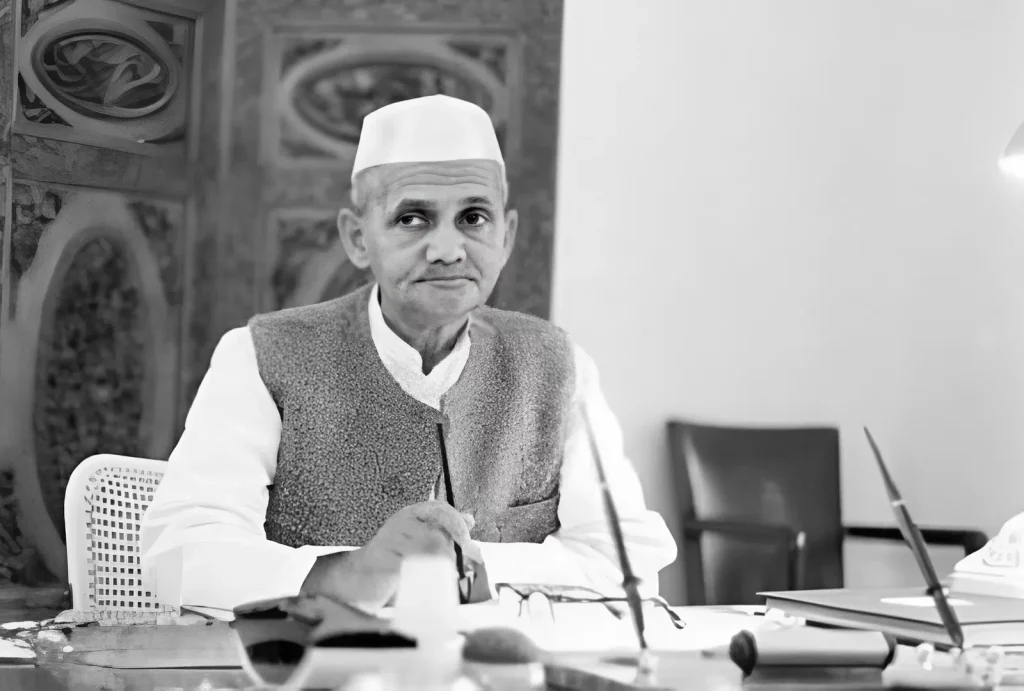
As 2025 marks sixty years of the National Dairy Development Board, born of the White Revolution, it is a moment to reflect on its impact and Lal Bhadur Shastri’s legacy. With the United Nations observing 2025, the International Year of Cooperatives with the theme ‘Cooperatives Build a Better World’, Shastri deserves tribute for planting the seed of a self-reliant India, and his vision of creating dairy cooperative movement across India.
From symbolic sacrifice to structural reform
Lal Bhadur Shastri’s leadership was all about moral persuasion and policy innovation. He urged citizens to skip meals once a week so that grain could be sent to the poorest, while his own household set the example. But beyond symbolism, he backed scientific farming methods that seeded the Green Revolution, which within a decade transformed India from a grain-deficit to a grain-surplus nation. “We must stand on our own feet,” he remarked in the parliament, “or we shall never hold our heads high among nations.”
At the same time, he set in motion the White Revolution, the dairy cooperative movement that turned India into the largest milk producer in the world. Anchored in Anand, Gujarat, and driven by Verghese Kurien’s vision, the cooperative model became the foundation of rural prosperity. Together, the two revolutions gave India the food security and confidence to pursue sovereignty on its own terms.
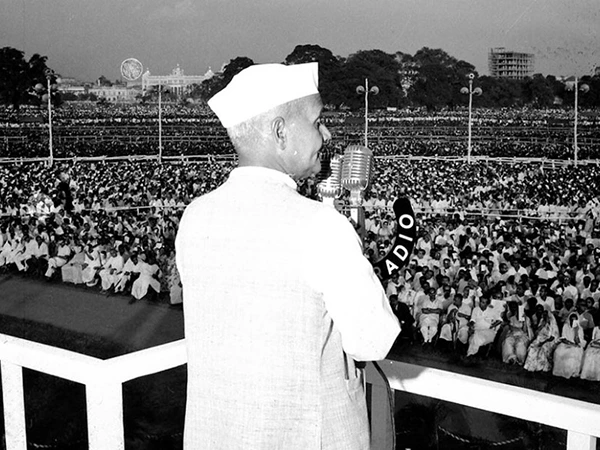
From barefoot boy to national leader
Born in 1904 in the railway town of Mughalsarai, Uttar Pradesh, Shastri lost his father when he was barely two. He often walked miles to school without shoes, an experience he said “taught me to depend on the strength of my own hands.” Drawn to Gandhi’s independence movement, he endured repeated imprisonments and emerged from the freedom struggle with a reputation of patience, courage and incorruptible integrity.
In independent India he distinguished himself as a minister who acted on principle, famously resigning as Railway Minister after a train accident, declaring it his “moral duty to accept responsibility.” Jawaharlal Nehru teased him as “half-civilized” for his ever-present dhoti-kurta but also called him “a man of the highest integrity and devoted to ideas.” When Nehru died suddenly in 1964, Shastri’s humility and steadiness made him the consensus choice to lead a young nation facing daunting tests.
The twin revolutions: Green and White
Shastri inherited a country dependent on foreign wheat and prone to famine. Rather than impose rationing from above, he appealed directly to citizens. Families across India began observing weekly fasts so that scarce grain could reach the poorest, and Shastri’s own household joined the fast without exception.
He championed high-yield seeds, expanded irrigation, and fertilizer subsidies. These policies ignited the Green Revolution and transformed India into a grain exporter within a decade.
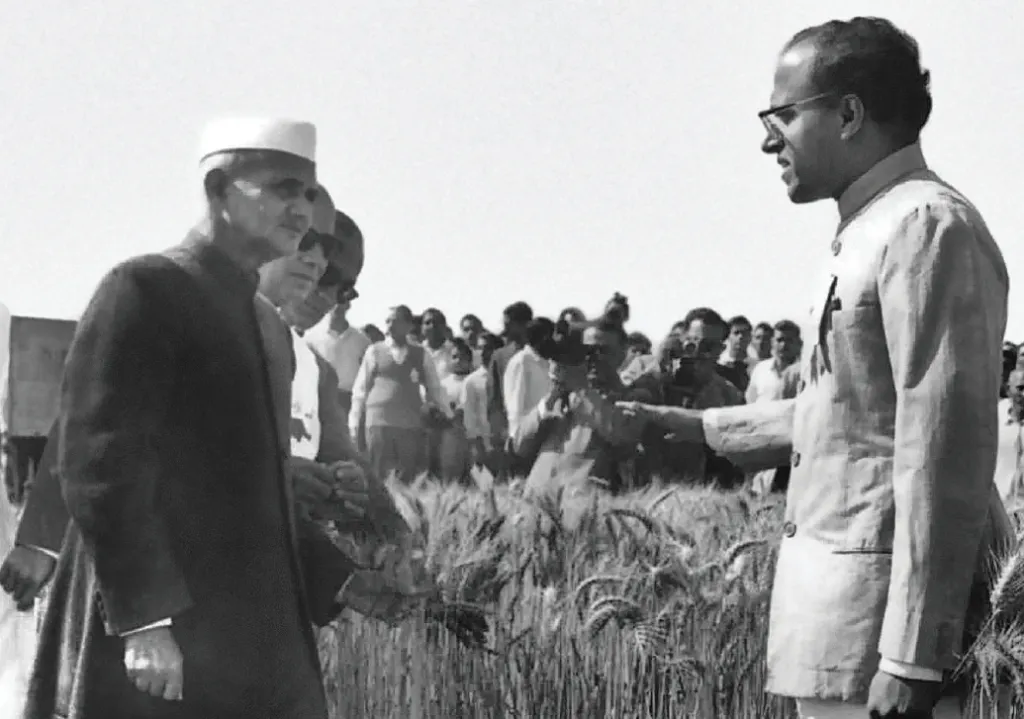
Lal Bahadur Shashtri in discussion with an agricultural expert
At the same time, he sowed the seeds of the White Revolution, following a fledgling dairy cooperative model in Anand, Gujarat, that would make India the world’s largest milk producer.
The genesis of that dairy success remains the stuff of Indian legend. On October 31, 1964, on Sardar Vallabhbhai Patel’s birthday, Shastri visited Anand and spent the night at the home of a local farmer, Ramanbhai Punjabbhai Patel. Conversations with villagers convinced him of the cooperative’s power. “I have put the most competent officers from the IAS in our milk cooperatives,” he said to the young engineer Verghese Kurien the next morning. “In spite of this, nowhere do we see similar success. In what way are you different?”
Kurien replied, “Sir, in Kheda, I am an employee of the farmers. If I fail, they can fire me. In other cases, farmers are the ‘subjects’ of the government official controlling their society.”
Shastri smiled. “Dr. Kurien, you have to help me do what you are doing here, nationwide. I want you to head the National Dairy Development Board.”
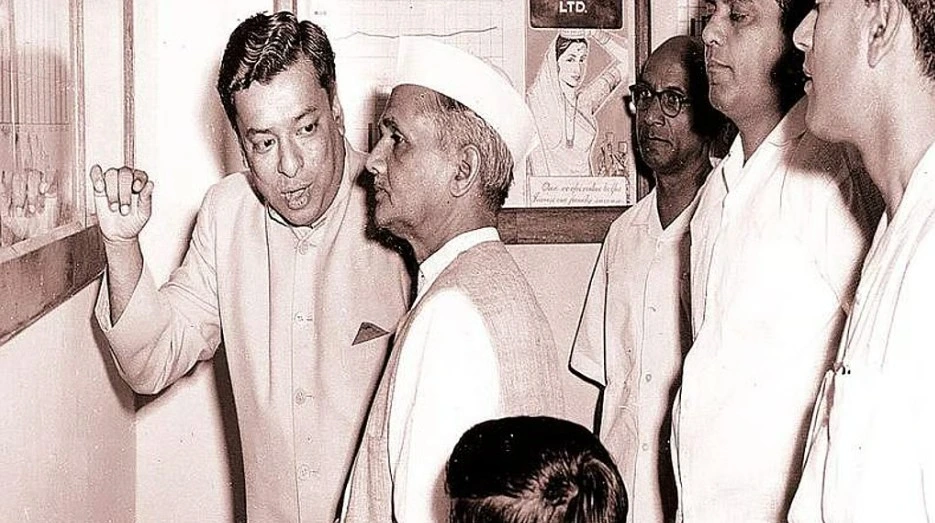
Verghese Kurien with Lal Bahadur Shastri in 1964
Kurien agreed on two conditions: he would remain an employee of the Kheda Milk Cooperative and would not move to Delhi, making Anand the NDDB’s permanent headquarters. Shastri accepted both demands, ensuring that the movement remained rooted in farmers’ control.
The NDDB, granted statutory status in 1987, still sets the pace of India’s dairy economy. With 2025, declared the International Year of Cooperatives by the United Nations, it stands as the lodestar of India’s cooperative movement with its flagship brand, Amul, posting a turnover exceeding ₹90,000 crore, far surpassing private competitors.
Jai Jawan, Jai Kisan: A doctrine for a self-reliant India
During the 22-day war with Pakistan in 1965, Shastri stood before a gathering in Allahabad and coined the phrase that would define his premiership: Jai Jawan, Jai Kisan. It was above oratory. By coupling the soldier with the farmer, the leader offered a national doctrine that India’s sovereignty is depended equally on the ability to defend its borders and to feed its people.
Even as a committed socialist, he resisted a regimented economy, believing that self-sufficiency must coexist with individual initiative. His vision of empowerment of soldiers and farmers alike remains a touchstone for India’s identity and finds a modern echo in the government’s call for Atmanirbhar Bharat (Self-reliant India).
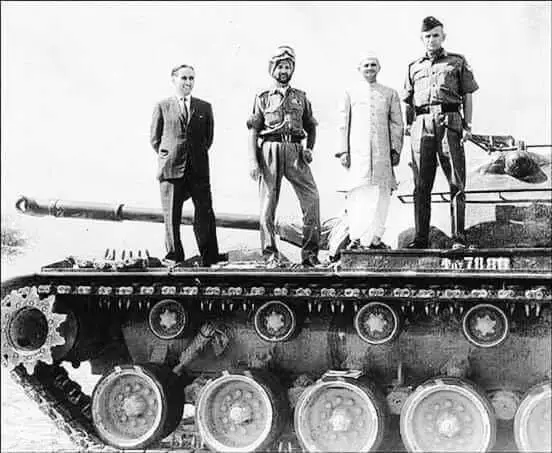
Lal Bahadur Shastri atop a Pakistani tank after 1965 victory against Pakistan
Diplomacy and a mysterious end in Uzbekistan
Lal Bahadur Shastri’s foreign policy matched his domestic pragmatism. During his tenure as prime minister, he visited many countries including England, the Soviet Union, Yugoslavia, Canada, Nepal, Egypt and Burma. He strengthened ties with Moscow and Washington without surrendering India’s non-aligned independence. In January 1966, he traveled to Tashkent, in Soviet Uzbekistan, to sign a peace accord with Pakistani President Ayub Khan after a 22-day war. “The path of peace is the path of courage,” he told aides that night.
Just hours later, at 1:25 a.m., he awoke coughing violently in the villa where he was staying. With no intercom or telephone, he walked to alert his staff and summoned his doctor. By the time help arrived, he was dying. The official cause was a heart attack, yet when his body was flown to Delhi, blood was found on his mouth and chest. His family’s request for a post-mortem was denied, fueling decades of speculation, ranging from poisoning to Cold War intrigue about what really happened in Tashkent.
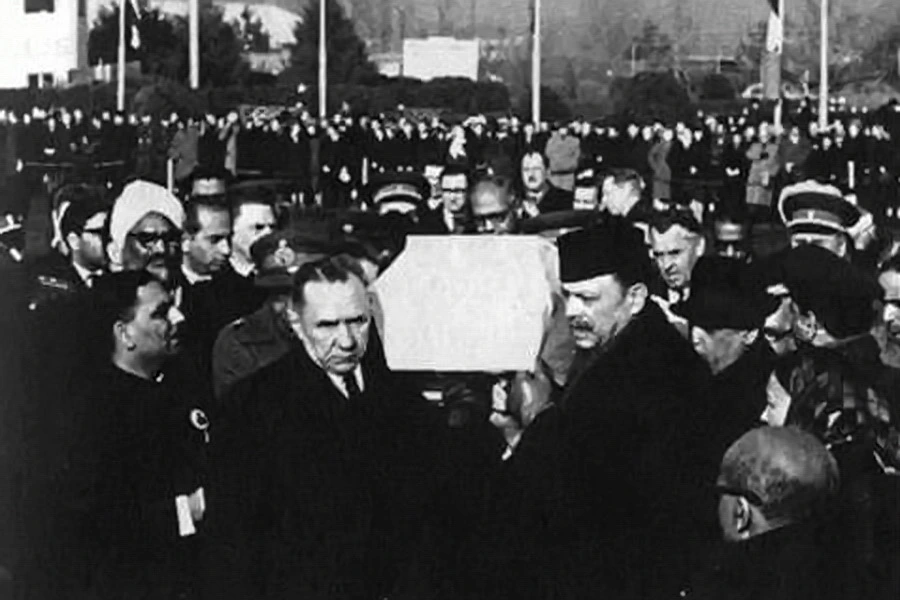
Shastri’s funeral cortege, Tashkent 1966, accompanied by Prime Minister of the Soviet Union Alexei Kosygin and Pakistan’s President Ayub Khan.
Echo of Shastri’s vision in the United Nations
More than half a century later, the ideals Lal Bahadur Shastri articulated are resurfacing in India’s global rhetoric. Speaking at the United Nations, External Affairs Minister S. Jaishankar invoked Atmanirbharta (self-reliance), Atmaraksha (self-defence), and Atmavishwas (self-confidence) as the pillars of India’s foreign policy. It was hard not to hear an echo of Shastri’s own words.
Today’s Atmanirbhar Bharat campaign focused on domestic manufacturing, renewable energy, and digital independence is in many ways the Green and White Revolutions writ large. Where Shastri urged India to grow its own wheat and milk, the modern state seeks to build its own microchips, satellites, and clean-energy grids. The second prime minister of India carved a distinction between independence and isolation by once mentioning “self-reliance is not withdrawal. It is the confidence to stand equal among nations.” It remains central to India’s strategy in a multipolar world.
A legacy for a global India
Lal Bahadur Shastri left no grand memorials. His authority was moral rather than theatrical. Yet his achievements endure in the wheat that fills Indian granaries, the milk that sustains its children, and the confidence with which the country now addresses the world.
From the modest prime minister who once walked unnoticed through London streets to the assertive nation speaking in New York’s halls of power, the through-line is clear, and highlights that a country that can feed itself, defend itself, and believe in itself commands global respect.
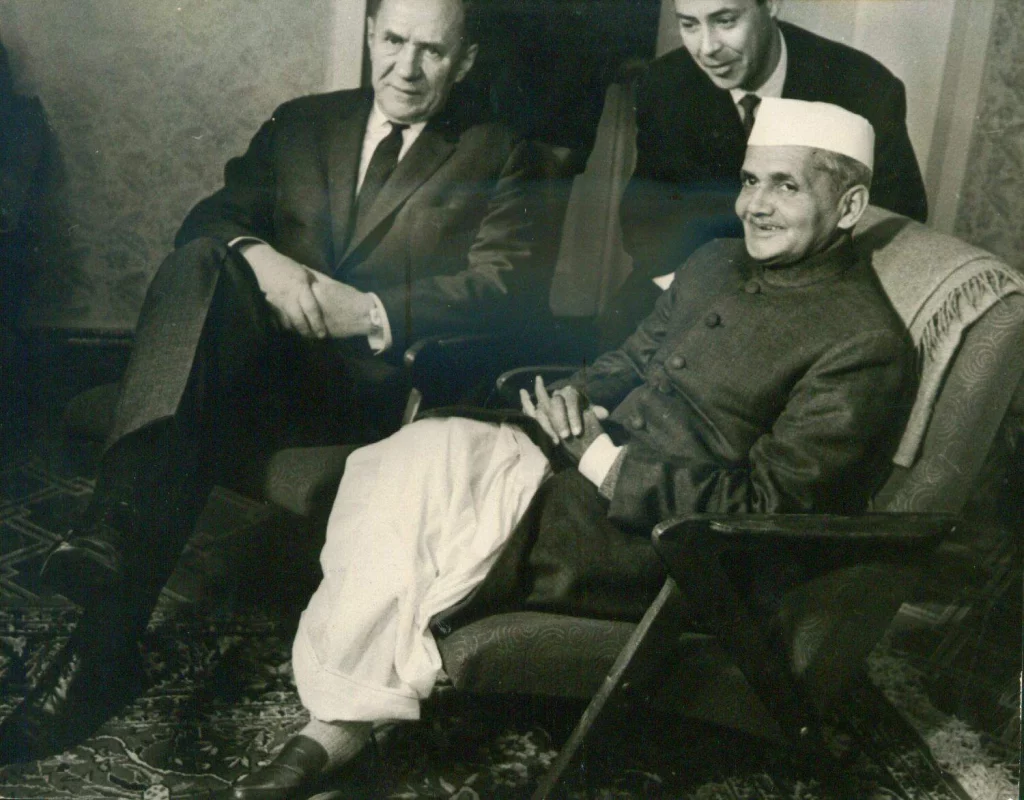
Lal Badaur Shastri during one of the diplomatic trips abroad
As 2025 brings the International Year of Cooperatives and marks six decades of the National Dairy Development Board that was launched by Shastri’s vision, India has a chance to take stock. Lal Bahadur Shastri, who fused the plough with the rifle and amalgamated village wisdom with national ambition, remains a statesman for our times. His voice, soft yet unyielding, still reminds the world that real strength begins at home and radiates outward to claim its place in history.
ALSO READ: From the margins to the Constitution: How BR Ambedkar became a nation builder



